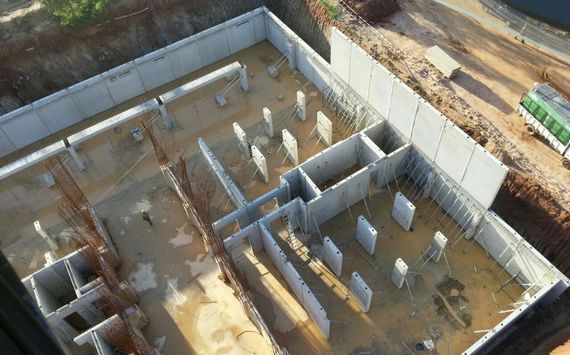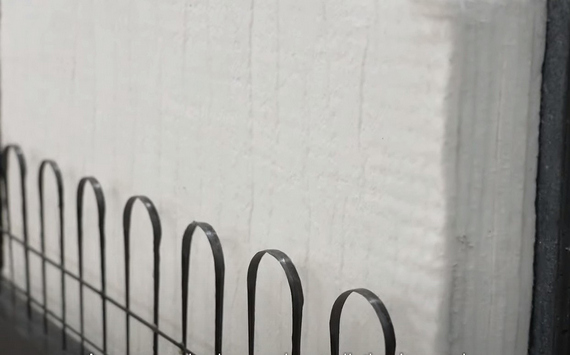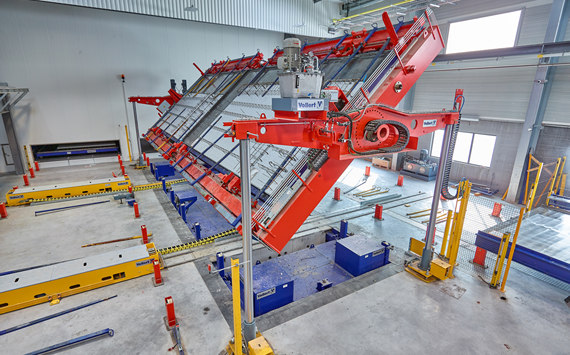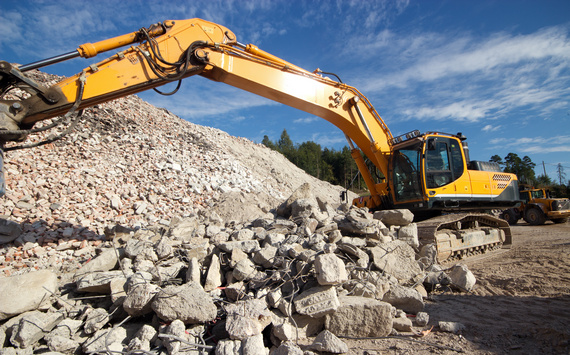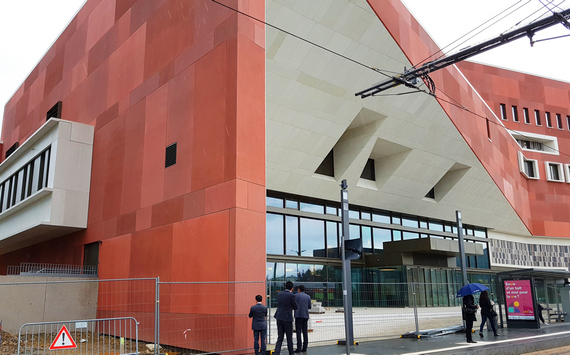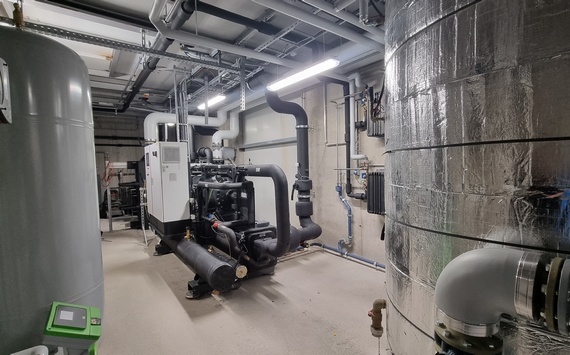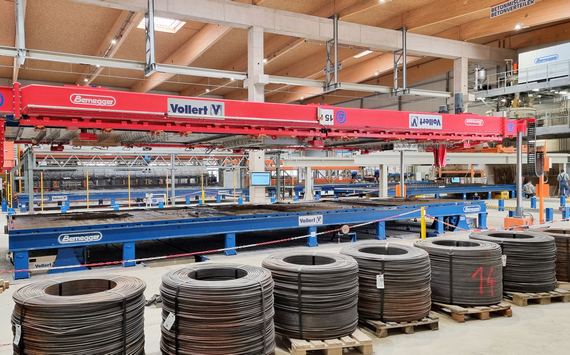
#Greenfab – sustainable production
Sustainability and climate neutrality are some essential challenges politics and the construction industry must face today. Materials and construction systems need to develop in order to achieve the set climate targets. Not only the construction process as such but also the lifecycle of residential buildings and the industrial manufacturing process require new solutions.
#greenfab: sustainably lowering CO2 emissions, reducing costs
Sustainably reducing CO2 emissions in the precast concrete factory while at the same time lowering the costs for raw materials and energy is the most important lever here. Vollert has developed the #greenfab seal as a special offer to live up to these challenges. It covers everything from new, energy-efficient concrete curing methods to innovations in machine technology and application of carbon-reinforced concrete for material savings or alternatives in energy provision and reduction.
Reducing cement
Concrete formulation
Optimising the concrete formulation (mix design) frequently helps in reducing CO2 emissions. Factors such as the required concrete quality or present additives are decisive for this. We perform a preliminary examination of the concrete formulation to develop specific optimisation suggestions.
Carbon reinforcement
Using carbon as reinforcement material instead of steel has many advantages. It is non-corrosive, can be formed freely and recycled. Concrete coverage is not necessary, saving cement due to flatter precast concrete parts. Carbon reinforcements can also be applied retroactively for strengthening.
Manufacturing process
Modern compaction stations stand out with their optimal results since they transfer a greater amount of energy into the precast concrete part. The cement share is clearly reduced at an unchanged water/cement ratio. CAD/CAM-controlled concrete distributors apply just the required amount of concrete to each position, preventing excessive use of material on the moulding pallet.
Concrete recycling
The excessive, uncured concrete is processed immediately in fresh concrete recycling. The aggregate is separated from the cement glue and added to the fresh concrete. In solid concrete recycling, cured concrete is crushed, separated from rock and reinforcement, and then added to fresh concrete again. Both methods reduce the cement share.


